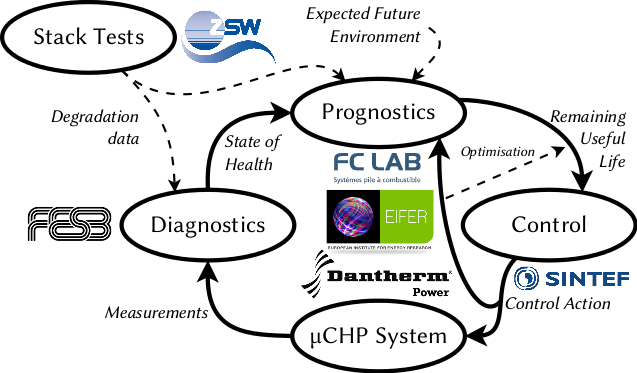SAPPHIRE is an European research project funded by the European Commission through the Fuel Cells & Hydrogen Joint Undertaking.
The project's objective is to develop an advanced control system for a methane-fed fuel-cell system for micro combined heat and power (µCHP) units. The key feature of this new control system will be to increase the lifetime of µCHP systems to 20,000 hours and beyond with current technology, i.e. only by virtue of the improved control system.
SINTEF's scientific tasks in SAPPHIRE are the development of advanced control algorithms, integrated with a prognostic framework able to estimate the residual useful life (RUL) of the fuel cells, and optimise it by choosing appropriate operating conditions.
SAPPHIRE's total budget is in excess of € 3.2 million, over 54% of which funded by FCH JU, based on a proposal presented for topic SP1-JTI-FCH.2012.3.3 (Robust, reliable and cost effective diagnostic and control system design for stationary power and CHP fuel cell systems). The project officially started on May 1, 2013 and is scheduled to complete after three years on April 30, 2016. The project is coordinated by SINTEF, and involves five other partners from four European countries beside Norway.

Quick Facts
Fuel cells
Fuel cells are devices that transform a fuel into electricity (the fuel is typically hydrogen). Fuel cells are different from e.g. car engines because the fuel is not combusted and no movement is generated: electricity is generated directly through electrochemistry. The only emission from a hydrogen fuel cell is pure water.
Whereas fuel cells are more efficient than internal combustion engines, they are still expensive and their lifetime is limited. This project will increase the lifetime of fuel cells with a control system that will pay extra attention to the conditions that degrade their performance.
Fuel cells and micro combined heat & power
Micro combined heat and power (for short, µCHP) is a term describing the application of natural gas to small-scale generation of not just hot water, as it is already common in private homes and offices, but also of electricity. The µCHP units produced by our project partner Dantherm Power convert natural gas from the gas distribution network into hydrogen, and use it to generate electricity in a fuel cell. The waste heat generated by the process, which would otherwise be lost, is used to provide heat. The system reaches therefore very high efficiencies and realises significant savings for the user.
The main barrier to the adoption of such system is their price and their lifetime. SAPPHIRE will increase the value of µCHP systems by allowing them to operate for much longer.


